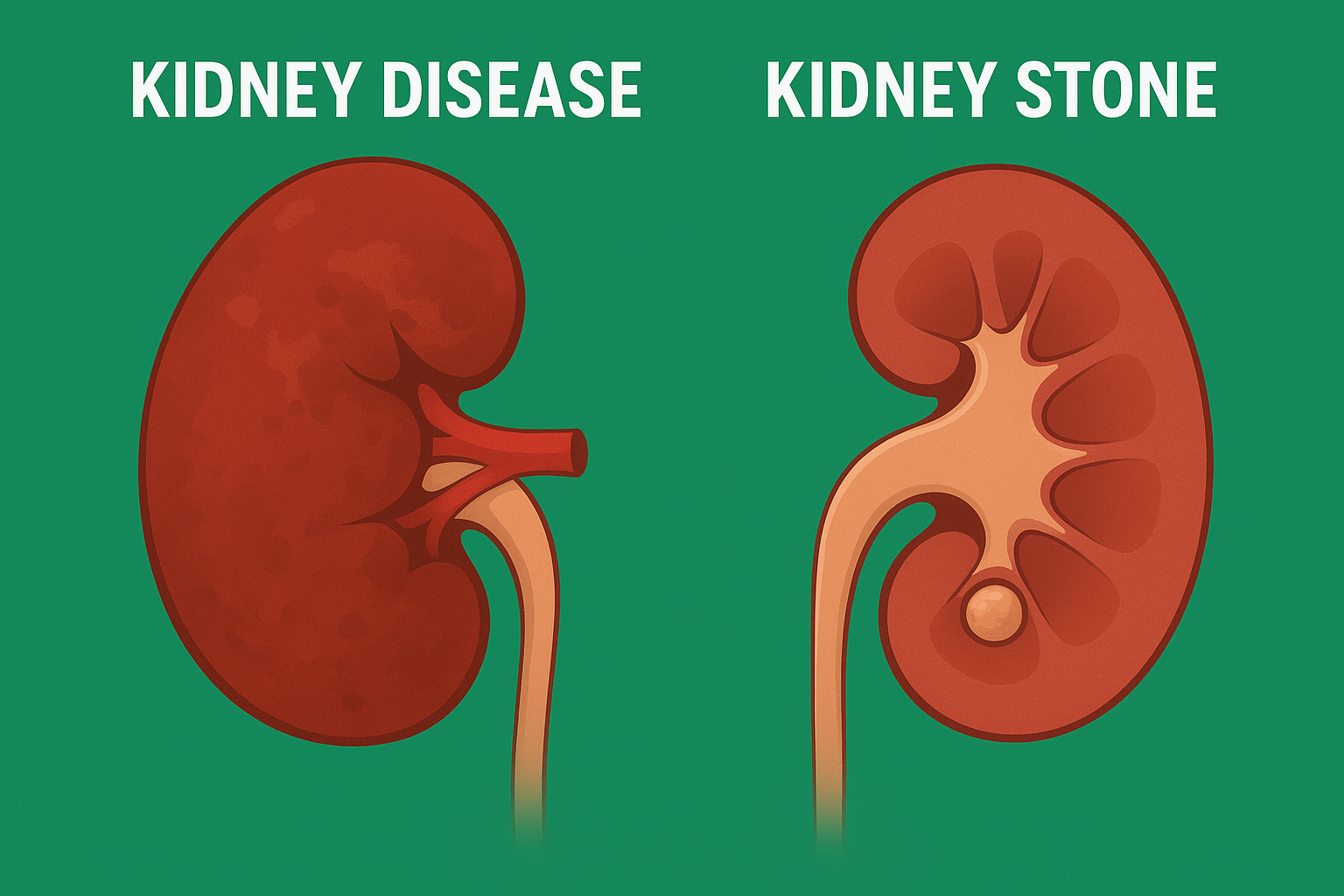
It started with just a little back pain.
Kidney disease vs kidney stones, people confuse among these two. It started with just a little back pain.A Man, age 42. One day he woke up with this annoying back pain. Thought maybe he slept wrong. He took some balm. Went to work. It was bearable.
But then—boom. Sharp pain. Like someone stabbed him from the inside. He rushed to the hospital, thinking it’s a kidney stone. But the doctor looked at his reports. Shook his head. “Doctor said this isn’t a stone. It looks like an early-stage kidney disease”. Aren’t they the same thing? People sound this similar. But No, it’s not really.
So what’s the key difference between kidney disease or kidney stones?
Let’s make it clear kidney disease vs kidney stones. They both affect the kidneys. But they’re not the same. Not even close.
1. Kidney stones – sharp, painful, but mostly short-term.
You feel it. Trust me, you will.
It comes suddenly. Like lightning.
Pain on one side. Back or stomach. You may even see blood in your urine.
Often caused by less water intake. Or high salt in food. Or sometimes nothing at all.
Mostly, doctors treat it with water, medicine, or minor procedures. Quick fix. Still painful.
2. Kidney disease – sneaky, long-term, and often silent.
This one’s quiet. You might not even know you have it.
It builds up. Slowly.
You feel tired all the time. Legs may swell. Urine may look weird. Caused by diabetes, BP, or infection. And once the kidneys are damaged — they don’t heal easily. It’s serious.
Many people ask, how do I know if I have kidney disease or a kidney stone? Well, here’s something that helps to clear:
- i. If you have sudden pain – It’s probably a stone.
- ii. No pain but body acting weird – It could be a Kidney disease.
- iii. Swelling, tiredness, and change in urine? Check it out.
Don’t try to self-diagnose yourself! Instead of doing google. Get a test. So, by reading this you may clear, what’s the key difference in kidney disease vs kidney stones?
Common Questions (FAQ):
No big signs, honestly. Just small things — tiredness, swollen feet, less pee, foamy urine. Subtle stuff.
Not usually. But they hurt a lot. And if you ignore them, it can create serious problems.
Short answer — yes. But not always. If stones stay too long, they block urine. That causes infections. Repeated damage weakens your kidney. Over time, it can turn into disease. So, best to act early.
Yes, it’s simple. It’s better to stay hydrated all time to prevent Kidney Disease. Toxins and wastages can cause Kidney stones. A daily 8 to 10 glass of drinking water is good to flush out those toxins through urine. That lowers the risk of kidney diseases.
- i. Feeling tired all time
- ii. Swelling in face, feet, and ankle
- iii. Frequent urination mostly at night
- iv. Foamy urine
- v. Blood in urine
- vi. Color changes in urine like dark, yellow, brown, or very pale urine
- vii. When urinating feel burning, or pain
- viii. Poor appetite – when waste builds up in your body, your stomach feels heavy.
- ix. Nausea and Vomiting
- x. Itchy or dry skin
- xi.Muscle cramps at night mostly.
- xii. Shortness of breath – excess fluid in the body can collect in the lungs when kidneys are weak.
- xiii. High BP that is uncontrolled
- xiv.Feeling foggy and difficulty concentrating – toxin buildup can affect your brain and focus.
- xv. Puffiness around the eyes
These are the warning signs to know, whether its a kidney disease or Kidney stones. It doesn’t always mean you have kidney disease. But if you have two or more of them, it’s best to get tested. A simple ultrasound, urine test, or blood test is recommendable. If you’re unsure whether it’s kidney disease vs kidney stones, consult a specialist.





